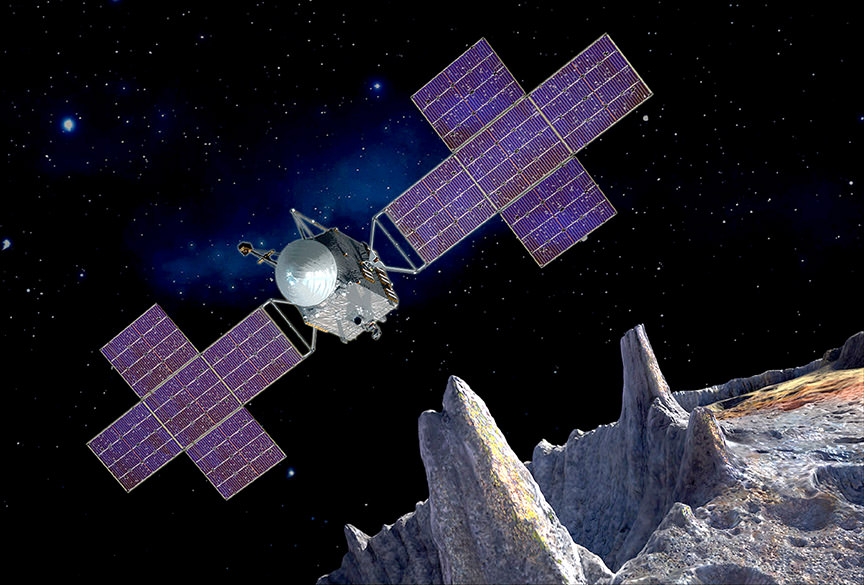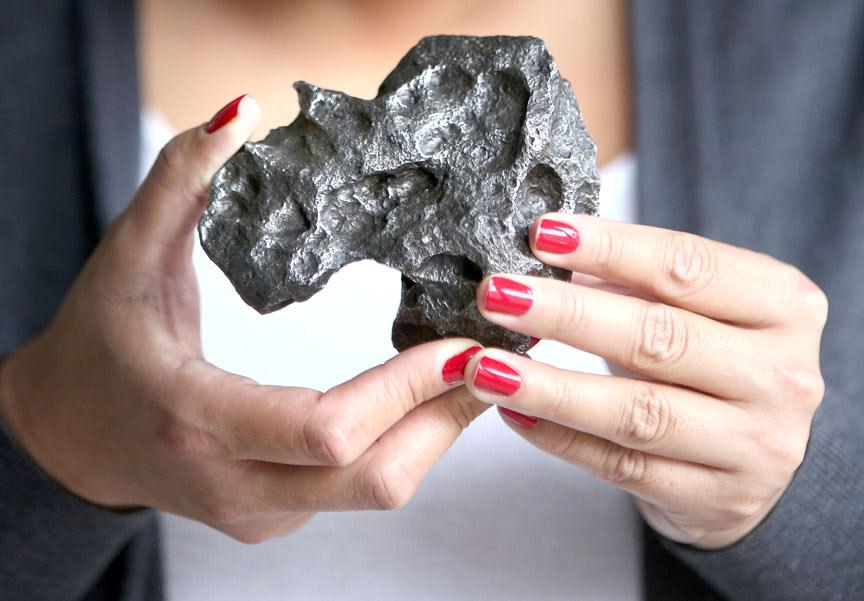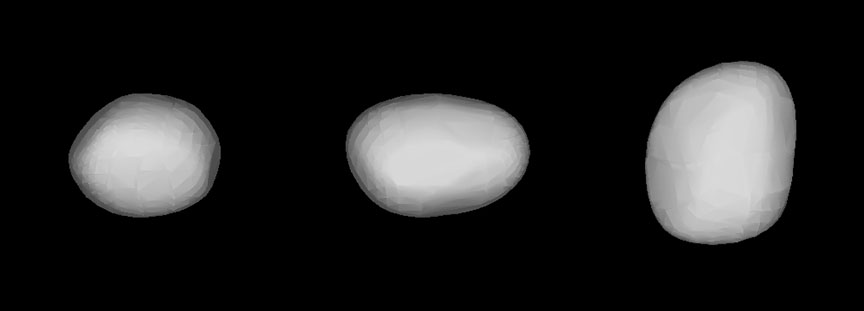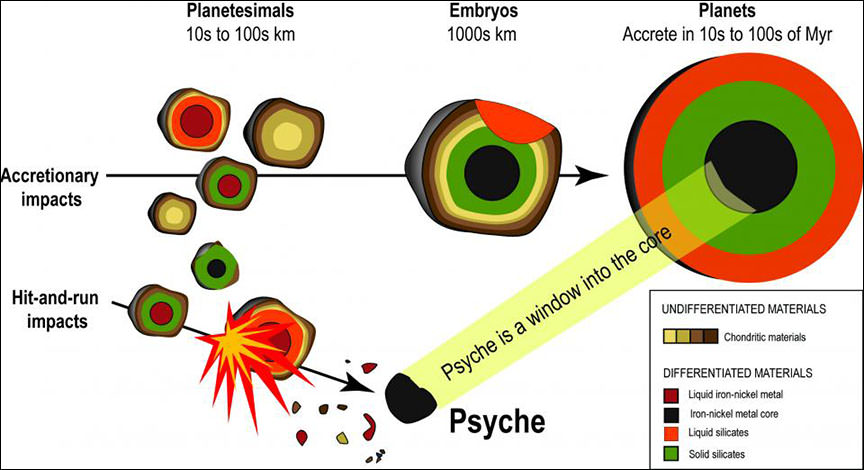
I’m getting psyched for Psyche, which is both the name of an asteroid orbiting the sun between Mars and Jupiter and NASA’s mission to the asteroid. Part of the reason for this excitement comes from learning today that NASA has moved up the launch one year to 2022, with a planned arrival in the asteroid belt in 2026 — four years earlier than the original timeline.
The mission team calculated a new trajectory to Psyche, one eliminating the need for an Earth gravity assist, that would get the probe there about twice as fast and reduce costs.
Fly over Psyche in this cool animation
“We challenged the mission design team to explore if an earlier launch date could provide a more efficient trajectory to the asteroid Psyche, and they came through in a big way,” said Jim Green, director of the Planetary Science Division at NASA Headquarters in Washington. “This will enable us to fulfill our science objectives sooner and at a reduced cost.”

With a diameter of over 120 miles (200 km), Psyche is one of the ten most massive asteroids in the main asteroid belt. Like certain meteorites found on Earth, it’s made almost entirely of nickel-iron metal. Metal is usually found as pepper-like flecks in stony meteorites, which represent the crust of an asteroid. Heat released during the formation of a large asteroid or planet causes the rock to melt, releasing heavier elements like iron and nickel which trickle downward under the force of gravity to form a metallic core. Radioactivity can also play a role in heating the rock.

That’s why Psyche’s kind of weird. How do you get a 120-mile-wide body of exposed metal floating around space? Astronomers think it was the core of a developing planet — a protoplanet — and probably covered once upon a time by a mantle of rock. Through collisions with other asteroids, that rock layer was eventually blasted away, exposing the metal core. As such, it offers a unique look into the violent collisions that created Earth and the terrestrial planets.

After a 4.6 year cruise that includes a Mars gravity assist flyby, the spacecraft will arrive at Psyche and spend 20 months in orbit mapping and studying the asteroid’s properties. The scientific goals of the mission are to understand the building blocks of planet formation and explore a new type of asteroid never seen up close before. The mission team will seek to find out whether Psyche is the core of an early planet, how old it is, what its surface is like and whether it formed in similar ways to Earth’s core.
Who knows, maybe we’ll learn it was once large enough to be considered a planet just like our own. You can stay in touch with mission developments on their Twitter site.


SOMEONE’s been thinking! The first thing I thought when I heard about Psyche’s metallic composition was, “We’ve GOT to send a mission there!” So this is a wish come true… WAY DOUBLE EXTRA GROOVY COOL!
SciFi short story subject? We get there and find that Psyche is actually the drifting hulk of a VERY old multi-generational star-ship.
Neat idea, but unfortunately I don’t think it will work. We already know Psyche is too dense to have large hollow bits inside it.